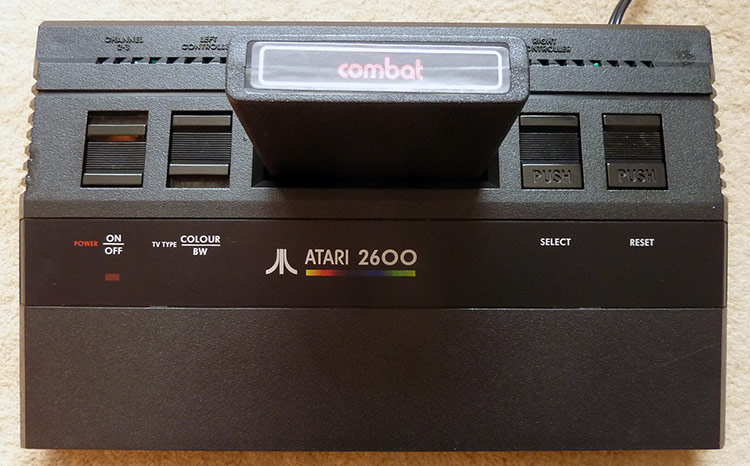
Retro Gaming vs Modern Televisions
So... What about consoles that only output RF?
This update has been a long time coming. The retro system has expanded and more consoles have been added. Most have been plain sailing, usually just needing the appropriate video lead from RetroGamingCables. However the Atari 2600 (I'm from around when these were released and it was always known as The Atari or The VCS) pre-dates just about everything when it comes to standards, and things get a little bit more complicated when it comes to integrating it with modern kit.
The VCS outputs it's picture and sound via an RF modulator to your telly's analogue TV tuner. The picture is quite frankly terrible, but 35 years ago so were TV's and we just put up with it. An additional problem for me is that I run monitors that don't have RF tuners. Sure the Plasma has it, but the analogue tuner in it is so bad I actually thought the C64 was broken and it really wasn't. Which all meant that I had to get something else out of it.
Being at the dawn of home video game consoles, what is generated by the actual machine internally isn't anything useful like RGB or Composite video. It's actually 3x luma streams + sync + chroma + sound. All of which are combined and are then sent to the RF modulator. None of these constitute a current TV standard, but you can fudge Composite or S-Video out of it (though there's not a lot of point in the latter in this case). So, you split the sound off and that's all easy enough, then you take the combined luma and sync signals (all nicely buffered on a Junior, which is why I got one over an older console) and combine them with the chroma (colour) and voila! You have a pseudo composite signal... That is ridiculously dark and doesn't look that great.
Comparing the PAL Junior schematics that I have to the actual console, it turns out that ALL the resistor values for the luma and sync lines are different. First things first we pulled all the resistors and socketed it up to try the schematic's values... Better... But more artefacts. At this point we replaced the resistors with pots and can now set them manually which got much, much better results. As this requires quite a bit of accuracy I then replaced the resistors with 15 turn 100k Bourne (ie: not shite) trimmers, and got even better results with perseverance. Finally I pulled and socketted the CD4050 buffer IC and fitted an CD74HC4050 in it's place which should be faster. We didn't do a before and after comparison though so I've no idea how much, if any, difference it's made.
This was a super cheap job I'll admit. I paid �15 for the console and the trimmers were a pound each. All the other parts were either scavenged or cost buttons. Oh yes buttons! The select button didn't work, so I scavenged a couple of buttons from an old nixie clock board and bonded those bad boys in there in place of the original horrid button strip. Much better.
In conclusion, if you want ultra sharp perfect graphics from a VCS, you ain't gonna get them without replacing the way it generates it's picture (basically replacing the TIA with something else). There are options out there to do that, but it's really not cheap to do. There are other options to deal with the signals the TIA outputs more accurately, but that'd have cost double what I paid for the console, so I didn't really see the point in that either. In the end I've got a way better picture than it ever had back in the day, it's not perfect, but I'm reasonably happy with.
UPDATE: Lots has happened since the original post. Essentially two more 2600Jr's and a 7800... What has become apparent is that there was definitely something amiss with the above 2600's video output. On the plus side it means that the above mods probably work marvellously, I can't see any reason why they wouldn't, and you probably don't even need the trimmers. The two subsequent 2600's both had a magnificent RF picture out of the box, and when converted look staggeringly good. The above machine looked iffy from the begining. Also they've been modded with the Ultimate Atari Video board (search UAV on AtariAge for details) which is awesome, and gives both composite and S-Video out. The S out being particularly stunning.
I also ended up with a 7800 inbetween the 2600's. It's a long story, but it was a full on restoration job (it was in a poor state). That also got a UAV, and though the pic is pretty damn good, for some reason it's not as nice as the other two 2600's. I suspect it's to do with the way the 7800 and 2600 parts of the machine output video. But it's ok. As with all these machines, they were never designed with even composite video in mind so getting them to work is going to be a bit of a fudge.